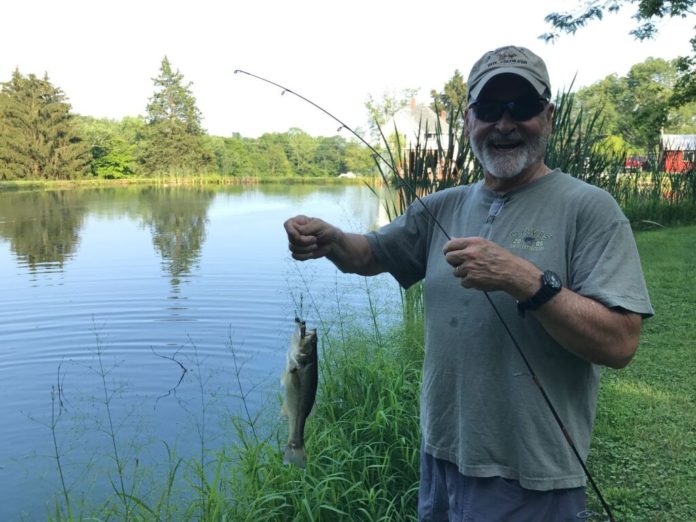Michael Salomone/Courtesy photo
Over the years, fly fishing trips and memorable catches have accumulated in the pages of my journals. A baptismal trip to Montana waters is one that made the book. My first Peacock Bass on the fly was a long time ago, but brought right back to the forefront of memory by reading a few words jotted down years ago in a journal. Do you keep a fly fishing journal?
My journal entries are now reserved for important people, far away places and exotic catches. I can’t keep every day on the water. If I did there would be a stack of journals like thick New York City phone books. (Millennials, there used to be a paper book printed every year with everyone’s phone number in it, crazy huh.)
Michael Salomone/Courtesy photo
Journals are good for long winters, for thumbing through pages and old trips. And to start planning ahead. Journals spark the desire to set aside dates for revisiting favorite places. And journal entries remind anglers to repair broken gear stored in closets since your last saltwater trip.
What’s in my journal? I start with the date, day of the week and weather, sometimes I note the wind if it was an issue. Usually I give the entry a name like “Chasing Peacock Bass on Griffin Road Miami, Florida,” “Salmonflyflu Strikes Again” or “Snakeheads on Top Water.”
The names of any co-anglers that were with me or that I may have met on the water are listed. These notes have become sacred as some of the incredibly generous, laughable and intelligent people I have met along the way have passed on. The broken notes left on the pages of my journals are the precious mementos of time well spent. I can remember the jovial laughter of Rick echoing in my ears and the taste of Maker’s Mark as we raised our glasses to toast a fine day of angling. Yes, my journals bring people who have passed closer to me again.
Michael Salomone/Courtesy photo
Type of gear, what rod, reel and fly line are all noted. It is important to note what type of leader set up I used for some of my fishing like off-shore fly fishing. Leader notes are extremely helpful to have for a reference from summer to summer. Success is often a result obtained from creating repeatable conditions. Notes from trips past, both successful and unsuccessful, can teach you a lot about what to do on your next adventure. Packing the materials to tie your own leaders is a necessity too. Don’t count on leader material to be on the shelf, bring it with you.
Remembering what flies were used is extremely helpful when planning your next outing. This is good information to review months before you travel. Special flies may not be for sale at the fly shop when you arrive. Order the flies you need well in advance of your travel dates. Referencing back on your journal will refresh your memory about that one special fly that surprised you last trip.
Local fly shops are not always available. If they are, that is a note I want in my journal. Names of owners, guides and the location of the storefront is important too. Sometimes you will find a unique fly that is tied to a specific location. For instance, I always stop in to see Norm Zeigler on Sanibel Island, Florida for a half dozen or more of his Schminnow flies. Yes I have other Schminnows tied by great anglers but Norm invented the fly. I’m not sure where he sources his fly tying materials but they seem to make a difference in durability and performance. At least that is what’s noted in my journal from my first trip to Sanibel and Captiva.
Fish caught are always listed, and a trips’ success is not based on the number at the bottom of the page. Multiple species, freaks or notably large catches always get a special indication in the journal entry. I don’t usually target one particular fish or species but if I did that is noted too. I am more than happy to log any catch. I take what the water gives me as long as it is on a fly.
Do you keep a fly fishing journal? What’s on the pages? An angling journal is a gift you give to yourself. Timeless memories from faraway places come back to life when you wade through the entries in your journal.
Credit: Source link






























